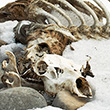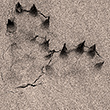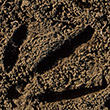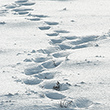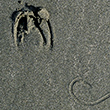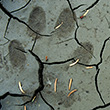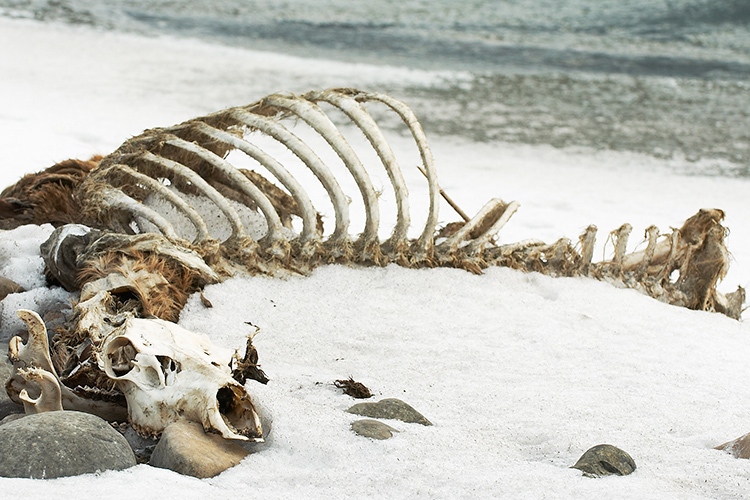
Availability: Undetermined - Enquiries?
In the Field
Elk Meets Railroad, Elk Loses. Columbia Lake, BC, Canada. December 5, 2004.
I love winter. Given where I live, this is probably a good thing. One reason I'm so fond of winter is the white carpet of snow associated with it. Anything non-white protruding from it is easily visible and, of course, the animal tracks left behind tell a story.
This elk carcass tells a bit of a story too, albeit a sad one. I found the carcass immediately beside a railway line and, given the distribution of hair and other bits it appears clear that the elk was hit by a train. Trains, unfortunately, kill a lot of wildlife (many animals are attracted to the tracks by grain and other edibles that leak out of the cars). And, I'm always amazed that hard-to-approach (and sensory-enhanced) animals fail to notice and get out of the way of noisy trains. On the positive side, many a coyote found an easy snack when they came across this casualty.
Besides the story behind the tragedy, I was visually attracted to this scene but the curving line (formed by the elk's backbone) that leads your eye to the primary subject - the skull. I tried to find an angle that contained only white in the background (the blue colour is ice on Columbia Lake), but it simply wasn't possible.
Behind the Camera
Elk Meets Railroad, Elk Loses. Columbia Lake, BC, Canada. December 5, 2004.
Digital Capture; Compressed RAW (NEF) format; ISO 200.
Nikon D2H with with Nikon 70-200mm f/2.8G ED-IF AF-S VR lens @ 116 mm (174 mm equivalent with digital conversion factor) supported on a G2220 Explorer tripod with Manfrotto 222 Joystick ballhead. VR turned to "On" and in "Normal" mode.
1/30s @ f9; +0.67 stop compensation from matrix-metered exposure setting.
At the Computer
Elk Meets Railroad, Elk Loses. Columbia Lake, BC, Canada. December 5, 2004.
RAW Conversion to 16-bit TIFF, including first-pass sharpening, exposure compensation, and tone curve adjustment, using Phase One's C1 Pro.
All further digital correction on 16-bit TIFF file using Adobe's Photoshop CS, including selective saturation enhancement and selective sharpening for web output.
Conservation
Elk Meets Railroad, Elk Loses. Columbia Lake, BC, Canada. December 5, 2004.
Ten percent of the revenue generated by this image will be donated to Wildsight.
Species Status in Canada*: This species is not designated as at risk.
Elk (Cervus elaphus) are large members of the deer family found in both mountainous regions of western North America (as far north as central BC) as well as in the coastal and mountainous regions of California, Oregon, Washington, and British Columbia. Smaller but significant populations are also found in aspen parklands in Manitoba, Saskatchewan, and North Dakota.
While this individual has definitely seen better days, collectively the elk populations of North America have probably never been in better shape anytime in the last century than they are now. While elk are not under any continent-wide threats to their populations, many ecosystems and elk herds within the Columbia Valley face development pressure, including pressure from logging operations. Wildsight is an effective conservation organization that protects biodiversity and promotes sustainable communities in Canada's Columbia and Rocky Mountains. Support for Wildsight, through donation or becoming a member, will help ensure that they remain effective in their efforts to conserve threatened or endangered species and ecosystems.
*as determined by COSEWIC: The Committee on the Status of Endangered Wildlife in Canada

















